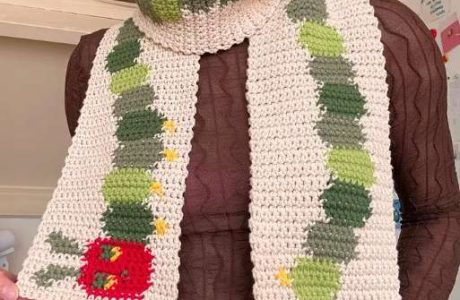
Crocheting, a craft that weaves warmth and love into every stitch, often prompts the question: should you crochet items for family members without charging them? The answer isn’t always straightforward, as it involves a delicate balance between generosity, personal boundaries, and the value of your creative work. Let’s delve deeper into this heartfelt dilemma and explore the factors to consider before making your decision.
Consideration 1: Time and Effort
Crocheting is an art that requires patience, skill, and time. Each piece you create involves careful planning, choosing the right yarn, selecting patterns, and spending hours crafting every loop. Before committing to crafting items for your family, honestly assess your schedule and the time you can realistically dedicate to these projects. Balancing your commitments and ensuring you can deliver quality work is essential to avoid overextending yourself.
Consideration 2: Value of Handmade Creations
The beauty of handmade crochet items lies not only in their aesthetics but also in the passion and creativity that go into crafting them. Your creations are unique and hold sentimental value beyond what mass-produced items offer. When considering whether to crochet for family without charging, help your loved ones understand the effort that goes into your work. Explain the value of a handmade item compared to store-bought alternatives.
Consideration 3: Your Relationship with Family
Every family is unique, and your relationship dynamics play a crucial role in your decision. If crocheting for your family members brings you joy and strengthens your bond, it might be a rewarding choice. However, if you feel that the expectation of free items might lead to misunderstandings or strained relationships, it’s important to address these concerns openly. Clear communication can pave the way for mutual understanding.
Consideration 4: Setting Boundaries
Preserving the value of your craft while showing your appreciation for your family’s support is a delicate task. Setting clear boundaries can help strike the right balance. You might consider offering a limited number of free items per year or for special occasions. Alternatively, you could provide family members with a discounted rate, which reflects your craftsmanship while still showing your love and generosity.
Consideration 5: Exploring Alternatives
Crafting for your family can be a beautiful way to showcase your talent and share your affection. To ensure a fair exchange, explore alternative arrangements. If your family members possess skills or services that you can benefit from, a barter system might be suitable. This approach promotes a sense of reciprocity and ensures that both parties feel valued and appreciated.
Open Communication is Key
Navigating the territory of crafting for family members involves open and honest communication. Engage in heartfelt conversations about your craft, your availability, and the intricacies of each project. By sharing your perspective and understanding their expectations, you can work together to find a solution that respects your creative process while nurturing your relationships.
The decision of whether to crochet items for family members without charging is deeply personal. It involves factors such as time, effort, relationship dynamics, and the value of your craft. By finding a balance that aligns with your values and the appreciation you have for your family, you can create a harmonious and meaningful approach to sharing your crochet creations with those you love most.
Do you need some help with the Tough love of Saying NO?
Here are a few ways you can word your stance on not working for free:
- Direct Approach: “While I love crocheting and sharing my creations, I’ve decided that I can’t take on crochet projects for free. My craft involves time, effort, and materials, and I believe in valuing the work that goes into it.”
- Value Explanation: “Crocheting is both my passion and a business for me. Just like any profession, I’ve set a value on my work to ensure its quality and sustainability. Unfortunately, that means I can’t take on free projects.”
- Respectful Boundary: “I’ve set a personal boundary around my crochet work to ensure its value is upheld. This means I won’t be able to create items for free, as I want to provide the best quality to everyone who appreciates my craft.”
- Financial Consideration: “I’ve established pricing for my crochet pieces that reflects the time and energy I invest. While I’d love to create for everyone, I need to prioritize paying projects to support my craft as a business.”
- Business Perspective: “To ensure I can continue to create and share my crochet art, I’ve made a decision not to take on free projects. It’s about valuing my craft and maintaining its sustainability.”
- Quality Assurance: “I’m committed to providing high-quality crochet items that are crafted with care. In order to maintain this standard, I can’t take on free projects. I hope you understand.”
- Offering Alternatives: “While I’m unable to crochet for free, I’d be happy to discuss family discounts or special occasion pieces that can work within my craft’s value.”
- Maintaining Relationships: “I value our relationship greatly, which is why I want to be upfront about not working for free. This decision helps me balance my craft and my commitments.”
- Open Conversation: “I hope we can have an open conversation about this. While I can’t create for free, I’m more than willing to find ways to include my craft in special moments.”
- Emphasizing Commitment: “My commitment to crocheting is unwavering, and I want to ensure each piece receives the time and attention it deserves. Unfortunately, this means I can’t take on unpaid projects.”





Leave a Reply